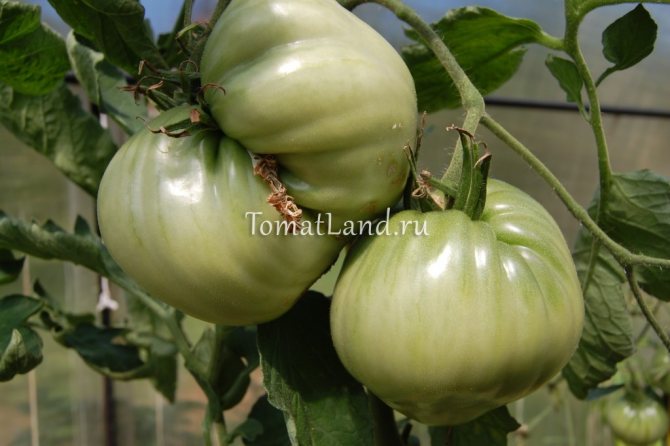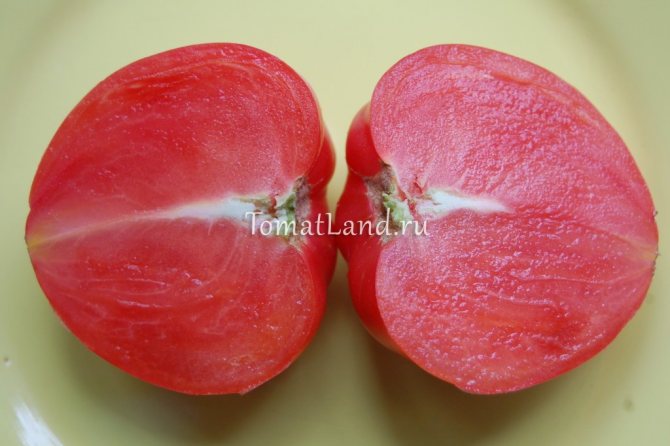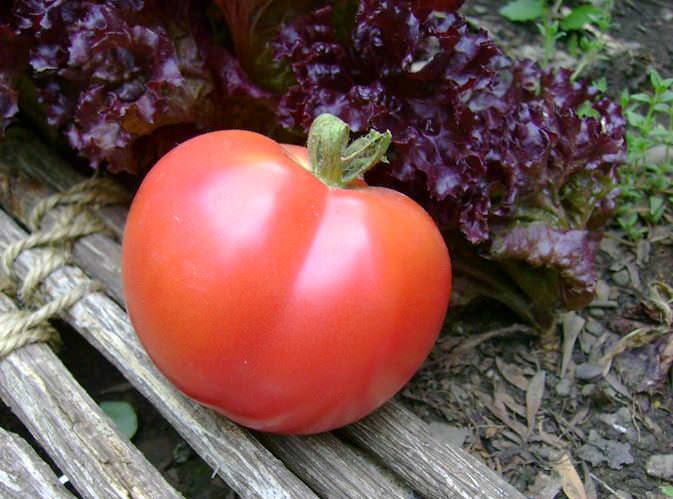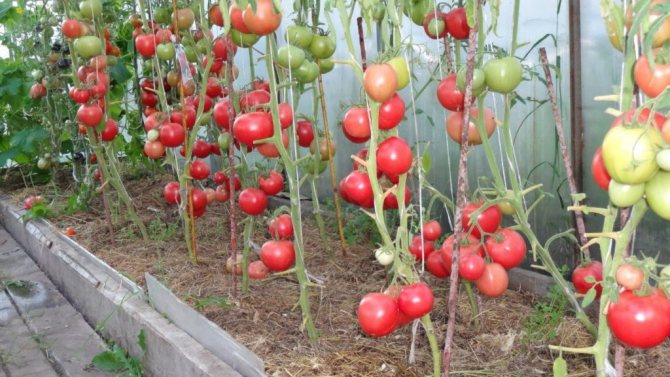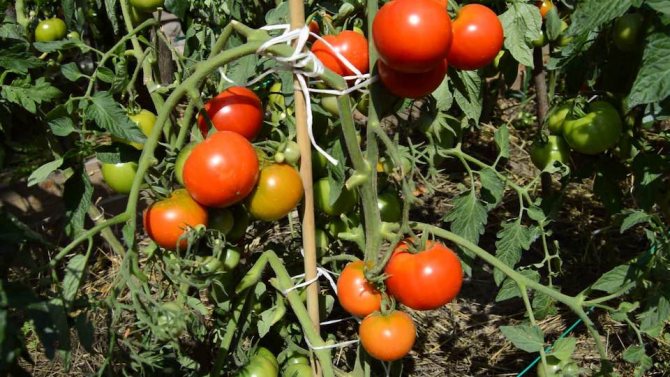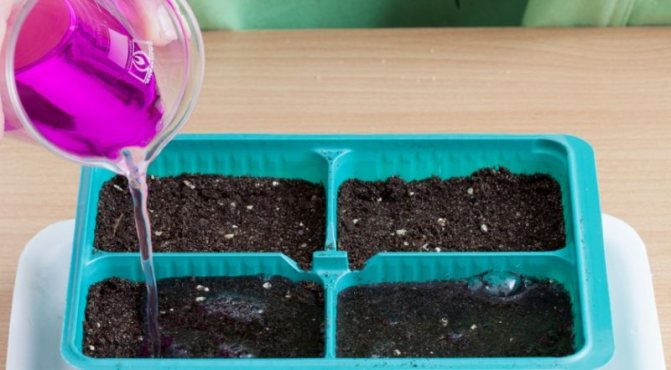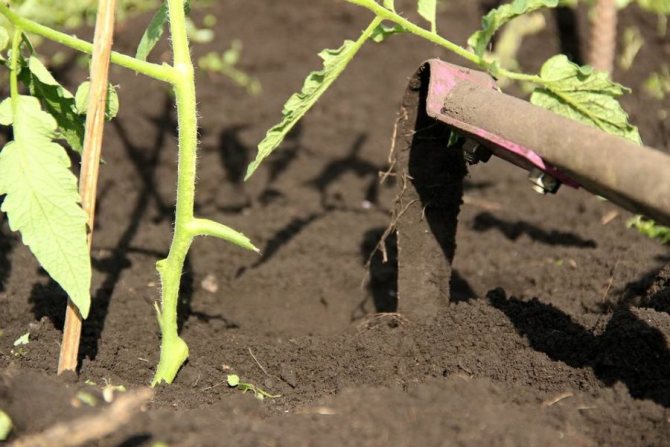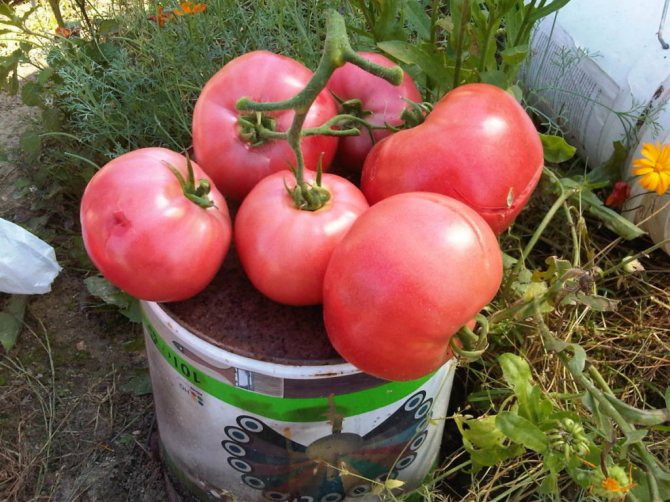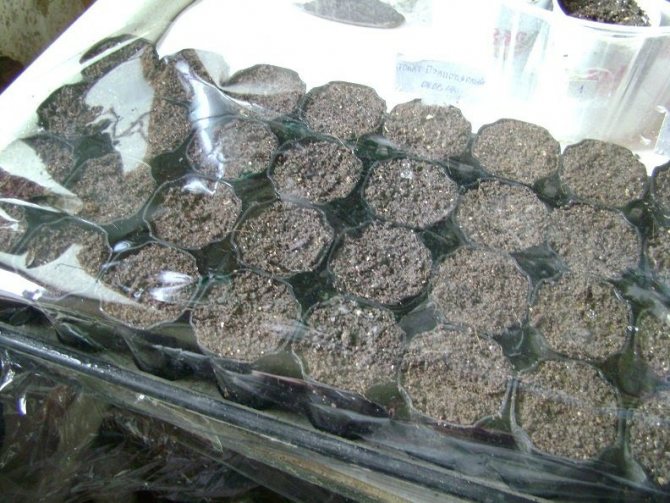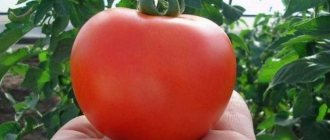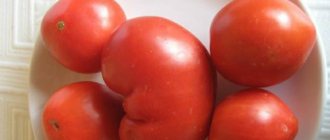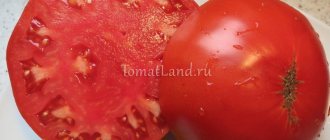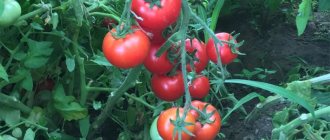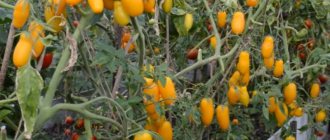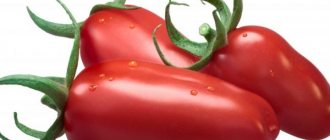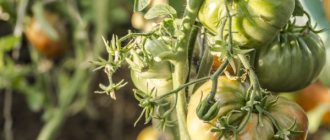
In this article, we will talk about such a wonderful miracle of nature as raspberry tomatoes. By consuming them, we will get an amazing taste and benefits for the body. And, of course, every summer resident, gardener wants to see raspberry tomatoes on his land plot and treat his friends and relatives with them. For a long time, the color of tomatoes was only red, but later varieties of orange, yellow, brown, raspberry color were bred.
Tomato Big Raspberry
Preparing seeds for planting
It is recommended to soak the seeds before sowing, this procedure has different purposes, depending on the solution in which it will be done. You can soak it in ordinary warm water, for this a two-layer piece of gauze is taken and the bottom of any container is lined, the seeds are laid out on this layer, we cover it with a second layer on top and soak it with warm water, but do not pour it! We cover tightly with foil or glass, it will be ideal to hold for 2-3 days. To increase the germination of seeds, they are soaked immediately before sowing for 30 minutes in a solution of any growth stimulant, for example "Ecosil". For disinfection of various pathogens, they are soaked in a solution of hydrogen peroxide (3 ml of peroxide are dripped per 100 ml of water), then the resulting solution is heated to 30 degrees and the seeds are soaked for about 20 minutes. Tip: for disinfection, experienced gardeners often use a solution of potassium permanganate, the color of ripe cherries, the seeds are etched in this solution for about 20-30 minutes, washed with plain water before planting.
Description of the variety of tomato Big raspberry, reviews, photos
The most successful tomato variety at the end of 2020 in my greenhouse. The bush is high, I had about 2 meters, with an ordinary leaf, the variety is indeterminate. I formed in 1 and 2 stems, the most successful option in 2.
Tomatoes Big raspberries are not only fruitful, but also delicious. The fruits are crimson hearts, quite large, I had 300-500 grams. The taste is amazing, delicate, sweet. I was amazed that there are practically no seeds in tomatoes, only "meat".
They did not hurt, did not crack. I will still grow and recommend everyone to try it.
I bought seeds from Valentina Redko, on the site of the sunny garden.
This is a natural tomato variety. Therefore, we recommend taking seeds from a ripe fruit and growing it again next season!
Reviews of those who planted tomatoes Big raspberries are unanimous in that this is one of the fleshy, sweet, large-fruited tomatoes.
Diseases and pests
The breeding characteristic describes the variety as resistant to many diseases. But, based on the experience of many gardeners, the variety is exposed to late blight, and like all nightshades, it is a favorite dish for the Colorado potato beetle. To prevent all kinds of fungal diseases, all seed material should be processed even before planting.
Throughout the season, plants are sprayed with various preparations that prevent the development of fungal spores. Viral diseases are often carried by insects, so it is very important to carry out treatment against parasites on time. Weeds can also be carriers. In the autumn, when cultivating the soil, you can add herbicides. These preparations completely destroy weeds and even the larvae of the Colorado potato beetle, which burrow into the ground for the winter to a depth of about 50 cm.
The best reviews from our readers
- Irina
City: Moscow regionProducer: seeds from Redko
Where they grew up: Greenhouse
The tomatoes were fleshy, red-pink, there were a lot of fruits on the bush, the shape of the fruit is very beautiful - in the form of a heart, large. But I didn't like the taste at all: insipid and tasteless. Because of the beauty of the fruit, I might give him a second chance to open up next year.
- Veta
Chelyabinsk cityWhere they grew up: Greenhouse
I liked the variety very much. Not late. The height today is about 1.8 meters. Harvestable. Tomatoes are delicious, sweet, without sourness. Such beautiful raspberry hearts of 250-300 grams.
Reviews on growing tomato Raspberry giant
Tatiana, Ramenskoe
I had two raspberry tomatoes growing - the Raspberry Giant and the Raspberry Giant. I liked the giant more, however, in the greenhouse I had it much higher than a meter (about 150 cm). The tomatoes are flat-round, large, very tasty.
Very fruitful, we ate it in salads, I stuffed it into all the blanks. I canned it in slices, took it in lecho, dressing, made the sauce, that is, it came up everywhere. The skin is rather red, but crimson when cut. There were no small tomatoes, all the large ones are just right for processing.
Zhanna, Velsk
When I was preparing tomato seeds for sowing, I was surprised that the Raspberry Giant has them so tiny. I thought nothing would grow, but in fact the seedlings were - for a sight for sore eyes. I highly recommend this variety, as there are no problems in leaving, it is very productive. Last year, I didn't have a lot of tomatoes in general, as I had to abandon my dacha due to a job change. It rarely appeared there, but this tomato has a lot of fruits. She took it off in green, everything was ripe, and then everyone went to salads.
Description of the set of seeds "Raspberry Miracle"
Tomatoes of the "Raspberry Miracle" series differ from other varieties of tomatoes in color. It is not red or pale pink, but bright crimson. Summer residents like these varieties with tender, juicy and sweet pulp. Scientific and production association "Sady Rossii", which was formerly called "Garden and Vegetable Garden", has been breeding the best varieties of raspberry tomatoes for 12 years. As a result, they created 3 series of plants called "Raspberry Miracle". Each set includes 5 varieties of tomatoes:
- Series 1: Raspberry Sunset, Raspberry Berry, Bright Robin, Raspberry Paradise, Raspberry Wine (the series is listed in the State Register of Breeding Achievements in 2020);
- Episode 2: Raspberry Joy, Raspberry Bison, Raspberry Dream, Raspberry King, Raspberry Desirable (the series was entered in the register in 2017);
- Series 3: Raspberry Popsicle, Raspberry Heart, Raspberry Bunny, Raspberry Hero, Raspberry Surprise (these varieties were also registered in 2020).
All varieties of this series have good immunity to late blight and other fungal diseases that are characteristic of tomatoes.
The seed packages of the Raspberry Miracle series of tomatoes indicate that they are F1 hybrids. But in the State Register there is no note that these plants belong to hybrids. From this, it can be assumed that these tomatoes are separate varieties that have all the advantages of hybrid plants: resistance to diseases, high yields and germination.
All tomatoes in this series are intended for growing in all regions of the country in the open field (if climatic conditions permit) or in greenhouse conditions. These varieties are mainly used for fresh consumption as a salad crop. Some varieties can also be used in canning and juicing.
Tomato varieties from the Raspberry Miracle set require shaping and garters. These are determinant plants (that is, limited in growth). But their height can vary from 0.6 m to 2 m. The yield of the bushes is also different, depending on the type of plant.
Pink tomatoes have a lower acidity than red ones.
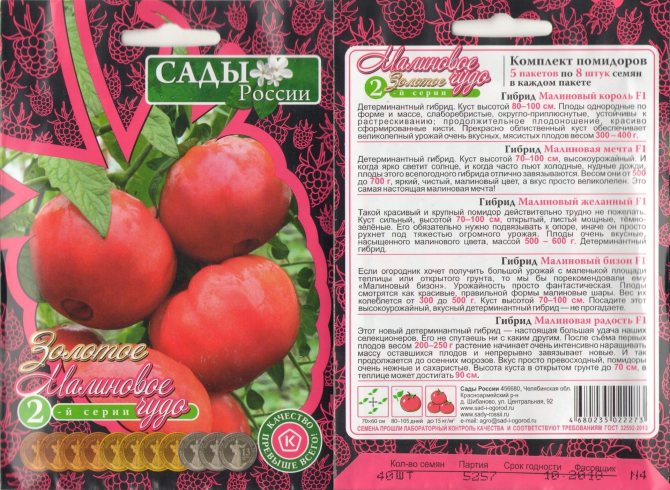

Tomato seeds Raspberry Miracle are sold in a set of 5 varieties
Fruit characteristics
Up to 12 brushes can be formed on one plant, the number depends on the variant of the bush formation (in one or more stems).
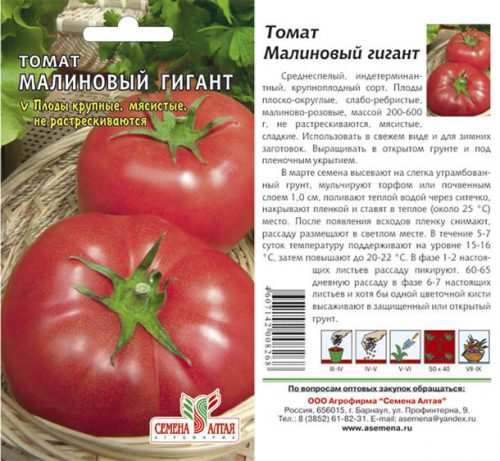

Tomatoes are large, rounded, slightly flattened. Light ribbing may be present. Fruits in clusters are aligned, weight - from 200 to 400 grams.
With proper agricultural technology and regulation of the number of flowers in inflorescences, tomatoes can weigh up to 500 grams.
The skin is thin, dense, with a characteristic shine. In an unripe state, tomatoes are green in color with a dark green spot in the area of the stalk. In a state of full ripeness, the fruits are bright crimson.
The pulp is very juicy, the number of chambers is from 4 to 8, the seeds are small and few. The taste is excellent. The fruits are sweet with a slight sourness. Basically, these tomatoes are for fresh consumption, salads, as well as the preparation of all kinds of tomato products. Mashed potatoes, sauces, juice, pasta, ketchups are prepared from the fruits of the Raspberry Giant. They are suitable for preservation (in slices), adding to various winter preparations (lecho, salads).
Also, this tomato is recommended for dietary, baby food. Fruits differ in keeping quality, when creating optimal conditions, they are stored for a long time, while they do not lose their taste.
The appearance and characteristics of tomatoes of the "Raspberry Miracle" series
Each variety of tomatoes "Raspberry Miracle" has its own characteristics:
- Crimson sunset. Early maturing plant. In greenhouse conditions, it can reach 2 meters in height. The fruit has a rounded shape, its weight is about 340 g. Productivity is about 12 kg per 1 m2.
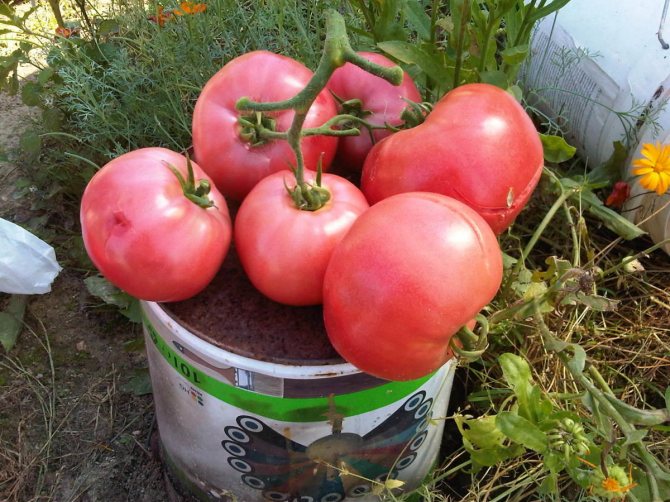

Tomato Raspberry Sunset is a tall plant
- Raspberries. Mid-season variety. The bush is about 60 cm tall. The fruits are large, round in shape, the average weight of which is about 400 g. The yield is high - about 11-13 kg per 1 m2.
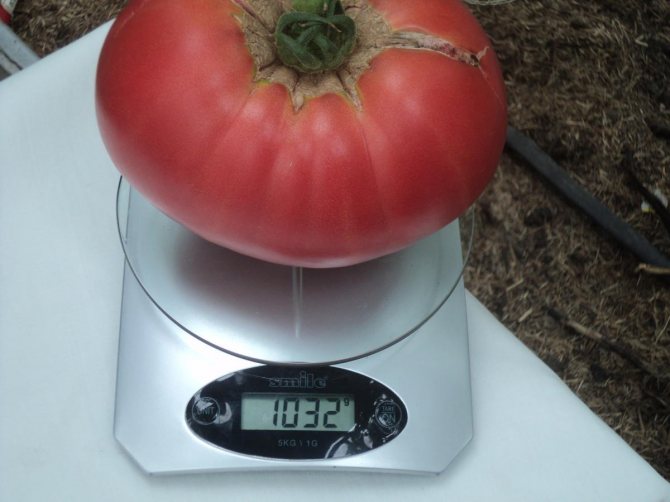

The fruits of the Berry-raspberry variety are very large
- Bright robin. Early maturing variety. Grows up to 1 m in height. The yield is high - 12-14 kg per 1 m2. The fruits are large (about 400 g), round.
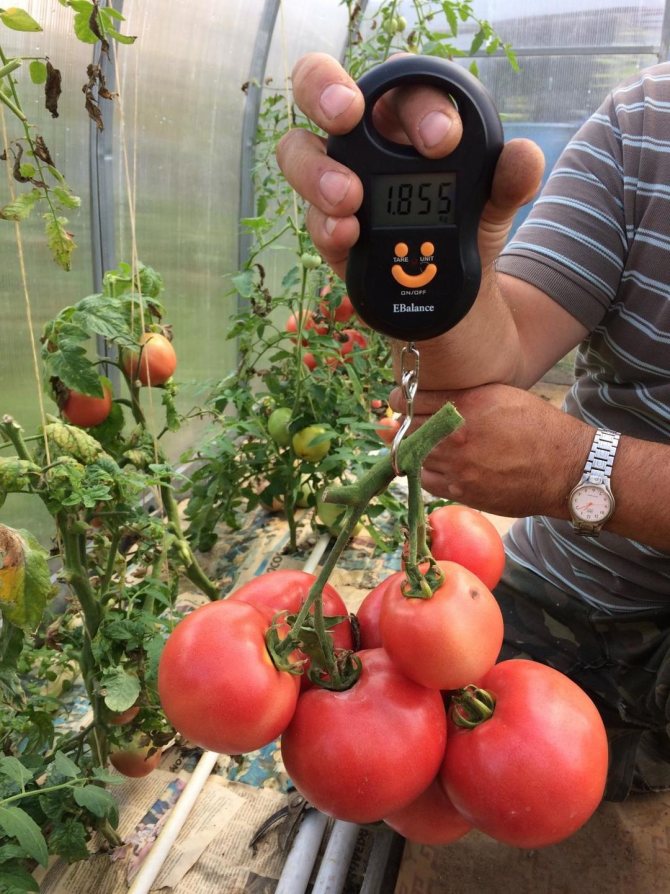

The yield of tomatoes of the Bright robin variety cannot but please gardeners
- Raspberry paradise. Mid-season tomato with very large fruits (about 500 g). The bush is up to 1 m in height. Productivity - 10-12 kg per 1 m2.
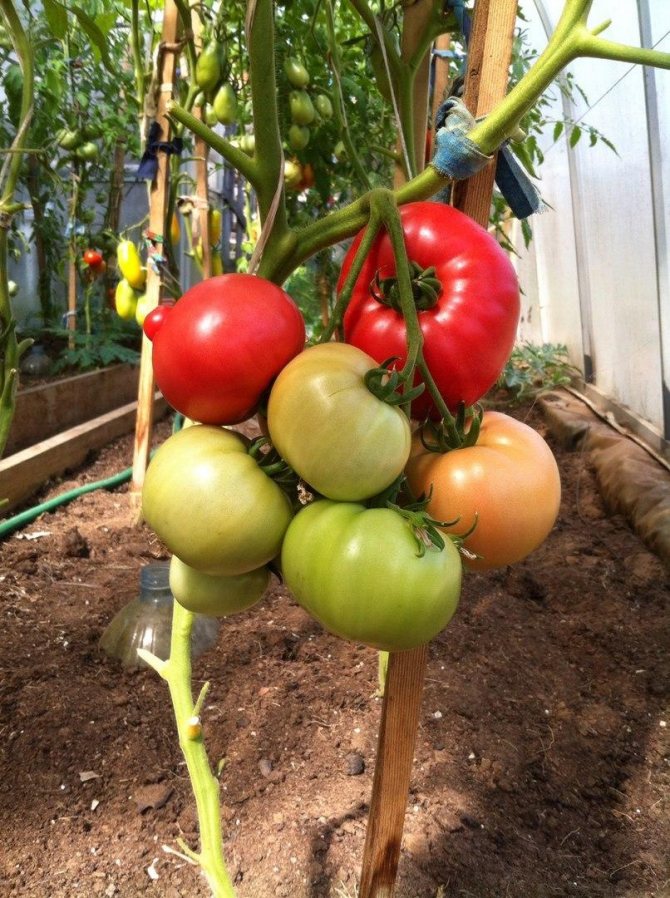

Raspberry Paradise is a high-yielding tomato variety
- Raspberry wine. In terms of characteristics and description, this variety is similar to the Bright Robin. But the fruits are not that big. On average, their mass is about 300-400 g.
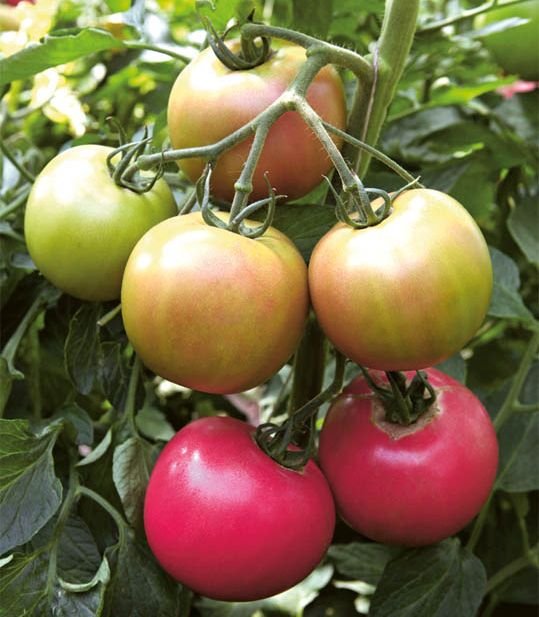

Tomato Raspberry wine, like other varieties of Raspberry Miracle, has an excellent taste
- Raspberry joy. Early maturing variety. The bush is 90–100 cm high. The fruits are not very large (about 100–130 g), but they grow in large clusters. This feature allows us to consider Raspberry Joy a high-yielding variety. The yield is about 14 kg per 1 m2. Tomatoes are egg-shaped.
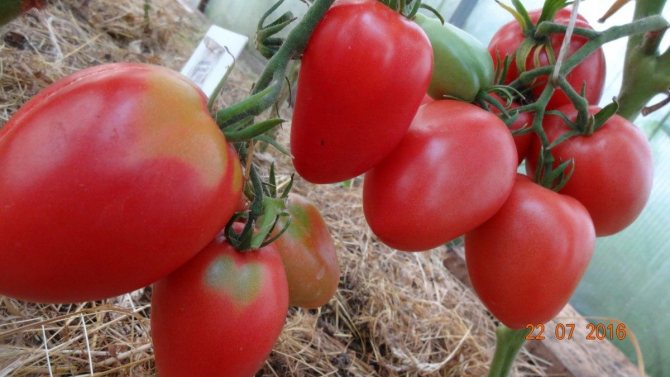

Tomato Raspberry Joy has an egg-shaped fruit shape
- Raspberry bison. Medium early variety. Limited in growth up to 1 m in size. Fruits are round, weighing about 350 g. Productivity from 1 m2 - about 12 kg.
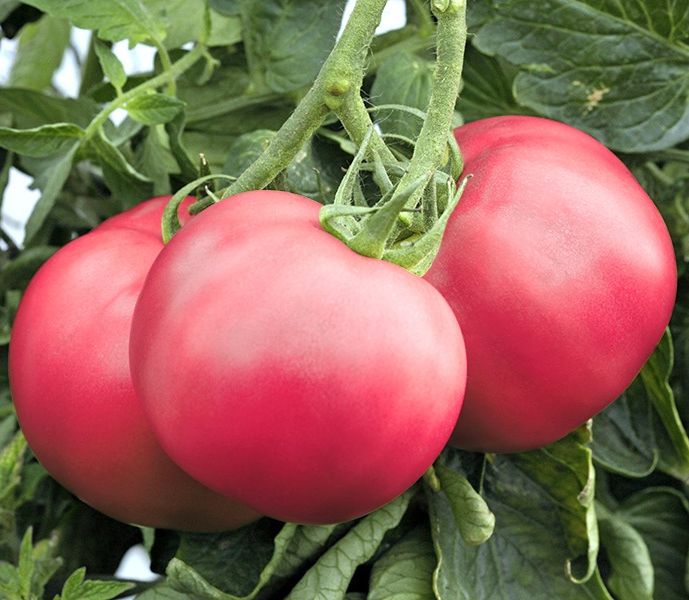

Tomato Raspberry Bison lives up to its name
- Raspberry dream. An early maturing plant with large (about 400 g) fruits of a round, slightly flattened shape. High-yielding variety (12-14 kg per 1 m2). The bush is up to 1 m high.
Tomato bushes Raspberry Dream, with good care, will not regret fruits for their caring owner - Raspberry king. Medium early. Bush up to 1 m in height. It is characterized by the uniformity of fruits, the average weight of which is about 300–350 g. The shape is flat-round. Productivity - 10-11 kg per 1 m2.
Probably the Raspberry King tomato has such a name due to its noble taste. - Raspberry coveted. Medium early plant with flat-round fruits. Their weight is about 400 g. The yield is about 13 kg per 1 m2.
Raspberry desirable is very good as a salad variety - Raspberry popsicle. Medium early variety. Fruits are round, weighing about 300 g. The bush grows up to 90 cm.Differs in good tolerance of unfavorable weather conditions: even with prolonged rains, it is very resistant to fungal diseases. The yield is high. About 14 kg from 1 m2.
Tomato Raspberry Popsicle is included in the third set of the Raspberry Miracle - Crimson heart. Medium early variety. Fruits weighing about 300 g are heart-shaped. Productivity from 1 m2 - about 13 kg. Differs in excellent taste. Bushes - up to 80 cm in height.
This variety has this name due to its resemblance to the heart muscle. - Raspberry bunny. Early maturing variety. Shrub up to 100 cm. The weight of one fruit is about 350 g, and the yield is 11–12 kg per 1 m2. It tolerates temperature fluctuations well and gives a large harvest even in cool weather.
Tomato Raspberry Bunny tolerates jumps in air temperatures well - Raspberry hero. Medium early tomato. The fruit is large (about 480 g), slightly flattened, rounded. The yield is high, about 15.5 kg per 1 m2. Bush up to 1 m in height. Resistant to cracking.
Tomato Raspberry Bogatyr lives up to its name by the impressive size of the fruits - Raspberry surprise. An early maturing plant with flat-round fruits weighing about 350 g. About 14 kg of tomatoes can be harvested from 1 m2. The bushes reach a height of about 90 cm.
Tomato Raspberry Surprise has a very harmonious taste
Harvesting
The fruits ripen by the beginning of August. Tomatoes are large in volume, fleshy, and have a sweet taste. They ripen almost at the same time, which is why the crop has to be harvested quickly. Tomatoes have a relatively thin skin. Do not store them for a long time. Usually the fruit is used for salads or processed.
After ripening, there are practically no spoiled fruits, since plants are rarely exposed to diseases. The "Raspberry Giant" variety has a high yield. From 1 m² you can collect 15-17 kg. Usually the fruits are round, they can also be oblong in shape. When harvested fully ripe, they have a bright raspberry hue. Tomatoes have more than 10 chambers.
Advantages and disadvantages
The series of tomatoes "Raspberry Miracle" has a number of undeniable advantages:
- large and mouth-watering fruits;
- juicy, fleshy and very tasty pulp;
- high yield even in adverse weather conditions;
- good disease resistance;
- unpretentiousness;
- resistance to fruit cracking.
The disadvantages include the fact that the seeds can only be purchased as a set. And also the fact that gardeners need to tie up and form bushes.
A feature of the "Raspberry Miracle" varieties is that the first fruits are much larger than the subsequent ones.
Pros and cons of the variety
The Raspberry Giant tomato has many advantages:
- Large fruit size.
- Excellent taste characteristics of tomatoes.
- Early ripening, high yield.
- Presentable appearance, due to which these tomatoes can be grown not only for private use, but also for sale.
- High resistance to disease.
Of the shortcomings, the need to comply with the irrigation regime is highlighted. The fruits are poorly suited for preservation due to their thin peel and large size.
The Raspberry Giant tomato is an unpretentious vegetable crop that can be grown both in the southern and northern regions, but it is necessary to maintain the optimum temperature. If you properly care for the seedlings, then regularly feed and water the plants, in August you can get a harvest of large and juicy tomatoes.
Features of growing and planting tomato "Raspberry Miracle"
There are no peculiarities in growing tomatoes from the Raspberry Miracle series. Like all tomatoes, they are grown in seedlings. Planting time depends on the region and the growing method (outdoor or greenhouse). Seedlings are planted in ready-made soil for seedlings or a mixture of sand, humus and soil from the garden.
When planting in a common box, when the first true leaves appear, the seedlings dive into separate cups. Seedling care involves timely watering, feeding, supplementary lighting with a lack of sunlight.
Seedlings are planted in a permanent place when the threat of frost has passed.
The formation of bushes can be done in 1, 2 or 3 stems. To make the crop ripe as quickly as possible, the first method is used. All stepchildren are removed from the main stem.
When a bush is formed into 2 stems, the harvest will be a little later, but its amount will be much larger. On the main stem, all stepchildren are removed, except for one, which grows from the axil of the leaflet under the first brush. It is from there that the second trunk will grow.
When a bush is formed into 3 stems, a stepson is also left under the first brush and one of the strongest of the lower sinuses.
In the greenhouse, bushes of 1 and 2 stems are most often formed.
Scheme of the formation of determinant tomatoes: a - in 1 stem, b - in 2 stems, c - in 3 stems
Agrotechnical cultivation
On each of the bags with seeds of raspberry varieties of tomatoes it is written that they can be grown in all regions of our country, both in open and closed ground. Tomato bushes are highly resistant to changeable weather conditions, continuing to grow and develop even with sudden changes in temperature.
It is advisable to germinate the seeds before sowing. Usually these tomatoes are grown in seedlings. The containers are filled with a special soil for vegetable plants, which can be purchased at specialized stores. No more than 18-20 seeds should be planted in each container.
As the shoots appear, the weakest ones should be removed. Thinning is carried out periodically until 8-9 of the strongest and most powerful seedlings remain in each container. With this method of growing, picking of seedlings is not required.


Watering 5-6 times a day
Seedlings watering - once every 5-6 days. During the period of growing seedlings, you can feed it a couple of times with complex mineral fertilizers. Young plants should be planted in a permanent place when a constant temperature of 16-17 degrees C is established.
In Siberian regions, after planting tomatoes in a permanent place in open ground, greenhouses should be installed on the beds so that the tomatoes do not freeze.
Further care of the growing bushes of this vegetable crop provides for regular watering, loosening the soil, removing weeds, applying top dressing and the obligatory tying of shoots to supports.
Testimonials
Inspired by the description of episode 1 of the Raspberry Miracle in the Gardens of Russia catalog, I bought the coveted five sachets for 265 rubles. I live in Omsk, I planted tomatoes in open ground. At the stage of seedling and fruit setting - a feast for the eyes, not tomatoes, lush, dark green, strong, tied 5-7 brushes. BUT: the whole series has almost the same fruits, round, small, tough, the taste is mediocre, like store-bought ones. The largest single fruits are 200 grams, the rest of the weight is 100–150 grams, suitable only for whole-fruit canning. Although agricultural techniques were followed and top dressing was introduced. This also applies to other hybrids from the Gardens of Russia - Balsam, Doctor Summer, Ivan da Marya. All are similar in taste and size and do not correspond to the declared characteristics. In the catalog and on the bags, the description of the characteristics was clearly written by the poet-storyteller. At the same time, proven varieties and hybrids of other companies in the open field this year were very successful both in size and quantity. Maybe the Raspberry Miracle is not for open ground in Western Siberia?
This year I planted the whole series. I planted it immediately in open ground. Good, powerful bushes grew, they tied well, the fruits were large. She led in 3-4 stems, was greedy, did not cut off unnecessary stepsons. But for the time being I’m not a gardener, I picked the tomatoes green at the beginning of August, tk. frightened by phytophthora. The tomatoes ripened for a long time, but those that I left on the bush did not get sick and ripened well, faster than the plucked ones.The taste is normal, sugar-like in the cut, I liked it, although they were strong.
This year I discharged it and put it in a greenhouse. The height was no more than 150 cm. The largest pulled at 400 g. Beautiful and tasty. I am satisfied with the yield, although I expected something more from them.
The Raspberry Miracle Seed Kit has established itself as a series of high-yielding, easy-to-grow tomatoes. Despite the fact that there are negative reviews, there are still a lot of positive impressions from the harvest.
Tomato is a popular vegetable among gardeners-gardeners, for which there is at least a bed on the site. There are now a great many varieties of various tomatoes on the seed market. Often the owner of the site is at a loss before choosing which variety to prefer.
It helps the gardener to more accurately navigate and buy what he wants, the characteristics and description of each tomato variety, as well as photos and reviews about the yield, for example, Raspberry flesh. This variety is relatively young, appeared not so long ago.
But it has already established itself very well, it is becoming more and more popular.
Reviews of vegetable growers about the variety
Galina, 34 years old, Pyatigorsk
I saw the Raspberry Giant tomato in the photo and was seduced by the beauty of the fruit. I bought the seeds from Zedek. The result was frankly pleasing: I grew up in the OG, practically without difficulties. True, they turned out to be rather average than early ones, but the tomatoes turned out to be very tasty, and there were quite a few of them. On average, I took a bucket from every three bushes. Shaped into 2 stems. I did not normalize the ovaries, so the tomatoes were medium in size (up to 300 g), but there is no dispute about the taste: one of the best. Fleshy, juicy, sweet. And they ate in salads, and rolled up the juice. Collected seeds, I will grow more.
Ivan, 48 years old, Belgorod
I have this "giant" for several years. Delicious, wonderful color. There are no problems if you correctly pinch and treat diseases. I grow in a greenhouse, I lead in 2 stems. It is not necessary to pinch: the stems stop growing after 5-6 brushes. But you must tie it up. If left without support, the bushes "fall apart", the stems fall on the ground. Once I tried to normalize the ovaries (I left 3 on each brush). I didn't like the result: the tomatoes came out very large (up to 500 g on the lower clusters), but irregular, "gnarled", and began to crack from the stalk. I will not repeat this experience. The average fruit size suits me perfectly.
Alla, 29 years old, Volgograd
In the open field, this variety grows well for me, the fruits are tasty, the yield is about 4 kg per bush. The seeds were given by friends. Plants match the description except for early maturity. Ripening begins 110 days after germination. Bears fruit for a long time, in August still forms ovaries with might and main. The bushes must be pinned and tied up: the fruits are heavy, the stems bend and break. The largest ones grew up to 600 g, but this was on the lower hands, on the upper ones they were smaller. My favorite to taste. It is simply irreplaceable in summer salads. I made juice and ketchup, I also liked it.
Love, 51 years old, Omsk
Great tomato. The fruits are beautiful, fleshy. True, they are not stored, but the taste is very high. And in terms of resistance to all sorts of misfortunes, the variety is not the worst. In the greenhouse I spray from phytophthora 2 times per season, the plants do not get sick. I shoot the last brown tomatoes in mid-September. The yield is decent, a total of at least 4 kg per bush. I have had seeds for three years already, but the first ones were bought from "Sedek".
Feature and Description
This variety is very interesting especially for those who want to get early production and enjoy delicious tomatoes almost at the beginning of summer.
Description of the bush:
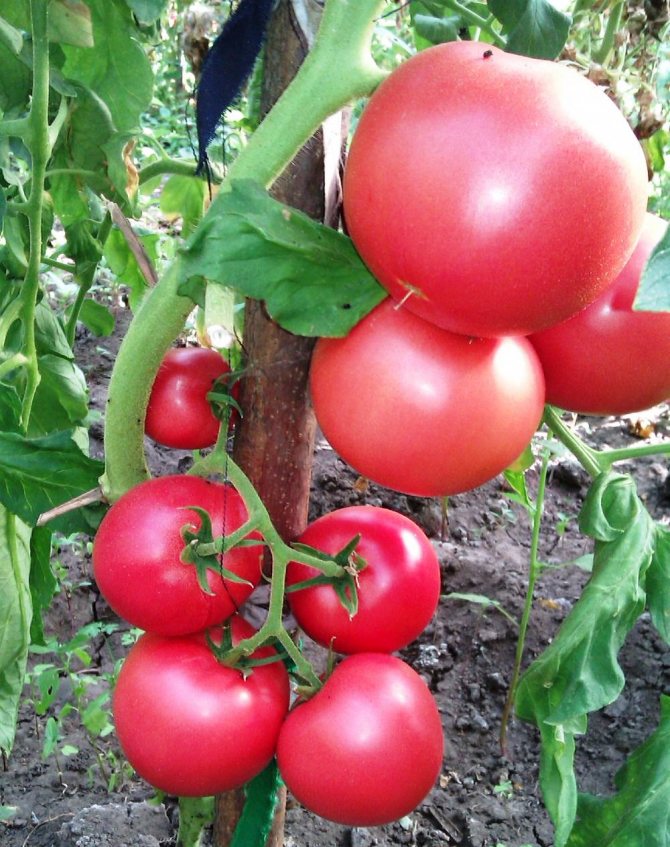

- early maturing, determinant: he limits his growth himself, does not need to pinch the top;
- standard: compact bush, stem is powerful, strong;
- from emergence to the beginning of ripening - 90-112 days;
- low bush: 40-50 cm3;
- it forms stepsons a little and late, so there is almost no need to stepchildren;
- but it is necessary to tie up: despite the low growth, the variety gives large fruits, they can bend the bush to the ground;
- the yield is quite high - about six kg of ripe tomatoes can be harvested from one bush (subject to the rules of agricultural technology for this variety);
- medium leafiness;
- long-term fruiting;
- large-fruited (350-450 g).
Since the Raspberry Fleshy Tomato is not a hybrid, you can further prepare its seeds for yourself and plant as many as you want.
Fruit
Raspberry fleshy tomatoes are endowed with outstanding qualities, thanks to which gardeners grow them with pleasure every season:
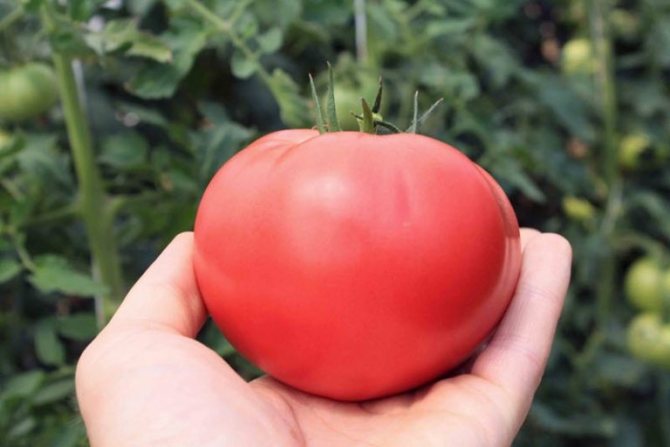

- pink-raspberry-colored tomatoes;
- shape - flat-round, slightly ribbed;
- weight: 300-450 g;
- the skin is smooth, thin, but dense;
- confident resistance to cracking, which provides excellent transportability;
- multi-chamber;
- the pulp is densely fleshy, dense, aromatic, juicy;
- high quality taste, sweet;
- a large amount of sugars, beta-carotene, solids.
Utility
The increased content of vitamins and minerals, beta-carotene and other beneficial substances contribute to health promotion in late spring and early summer, when the body is still weakened after winter.
Appointment
The appointment is universal, salad. Fresh tomato is very tasty, "from a bush", in salads and vegetable cuts. Also Raspberry Fleshy is excellent for technical processing: juices, pastes, lecho, puree, sauces, adjika, which are given a wonderful color and rich aroma. The fruits of this variety are excellently used in stewing, baking, frying with other products, and as a result of technical processing and cooking, these tomatoes do not lose their useful qualities and substances.
It is poorly suitable for canning - large fruits hardly crawl into the neck and are placed in a jar.
The best varieties of pink tomatoes: top 25 most popular
Note! The list of the best pink tomatoes was prepared based on the degree of popularity of the names of varieties and hybrids, an analysis of the reviews of experienced gardeners, as well as the personal opinion of the author.
The most popular and best varieties of pink tomatoes are (alphabetically):
By the way! The most common pink varieties are the following (according to the degree of fame): Pink honey, Batyanya and Noble - three main hits. Next in terms of fame are Grandma's Secret, Pink Elephant, Miracle of the Earth, Volovye Heart, Petrusha - a gardener, Abakan pink, etc.
Abakan pink
- Early ripe variety.
- The plant is determinate, bush is 1.1-1.7 m high. Grown in 1-2 stems.
- For open and protected ground.
- Fruits are large, flat-rounded, slightly ribbed, pink in color. The number of nests is more than 6.
- Weight - up to 500 g (average 200 grams).
- Productivity - 4-5 kg per sq.m.
- Taste good or great. Ideal for preparing salads.
Grandma's secret
- Mid-season variety. The ripening period is 115-125 days.
- The plant is indeterminate, 150-170 cm high. 3-6 fruits are tied on one brush.
- For film shelters and greenhouses.
- Fruits are flat-rounded, red-crimson (pink), low-seeded.
- Weight - 354 g (up to 1000 grams).
- Productivity - 16.9 kg per sq.m.
- Excellent taste: the fruits are sweet and fleshy. Perfect for fresh consumption and winter preparations.
Batianya
- Early ripening variety. From germination to maturation - 90 days.
- The plant is indeterminate, 1.7-2.0 m high.
- For growing in glass and film greenhouses or in the open field (in a cola culture).
- Fruits are heart-shaped with a spout, very smooth, shiny, crimson in color.
- Weight - 200-350 grams.
- Productivity - up to 17 kg per sq.m.
- Excellent taste: the fruits are sugary, sweet.
- Salad purpose: for fresh consumption.
- The fruiting period is very long.
- Cold resistant.
Bull heart pink
- Mid-season variety (110-115 days).
- The plant is determinate, 1.4-1.6 m high. Requires pinching. There are 3-4 fruits on the hand.
- For open ground (with a tie to stakes), film greenhouses and greenhouses.
- Fruits are flattened-conical (resemble the shape of a heart), raspberry-pink, smooth,
- Weight - 250-350 grams (individual up to 400).
- Productivity - 7.5-8 kg per sq.m.
- The fruits are fleshy, juicy, with a high sugar content, excellent taste.
- For salad purposes: recommended for fresh consumption.
Grandee
- Mid-season variety. Enters fruiting in 103-117 days after germination.
- The plant is determinate, 50-60 cm high. The inflorescence is complex. The first inflorescence is laid above 7-8 leaves, the next ones - after 1-2 leaves.
- For open ground and temporary cover films.
- The fruit is heart-shaped, medium-silvery, crimson. The number of nests is 4 or more.
- Weight - 130-250 grams.
- Productivity - 8 kg per sq.m.
- Fruits of good or excellent taste, juicy, sugary. Salad destination.
The second name of the variety is "Budenovka".
Cow heart
- Mid-season variety (111-115 days).
- The plant is semi-determinate, up to 120 cm high according to other sources, indeterminate, up to 160-180 cm). On the main stem, 4-5 clusters are formed, each of which contains up to 5 large fruits.
- For open ground, film greenhouses and greenhouses.
- Fruits are multi-chambered, cone-shaped (heart-shaped), pink-crimson,
- Weight - 300-500 g (according to other sources, 150-300 grams).
- Productivity - 6-8 kg per sq.m.
- The taste is excellent: the fruits are fleshy, very juicy, extremely tasty and aromatic.
- For preparing fresh salads and juices.
- Possesses complex resistance to the main diseases of tomato.
De barao pink
- Mid-season variety (115-120 days).
- The plant is indeterminate, medium-branched, medium-leafy, 2.5-2.7 m high. The first inflorescence is laid above 9-11 leaves, the subsequent ones - after 3 leaves.
- For film greenhouses and open ground (in the southern regions with a tie to the stakes).
- The fruit is oval, smooth, deep pink.
- Weight - 60-90 g.
- Productivity - 5.4-6.8 kg per sq.m.
- The fruit is firm, high in dry matter and sugars, good taste. Great for preparing fresh salads, recommended for whole fruit canning and pickling.
- Resistant to late blight, cold-resistant, shade-tolerant.
- Excellent transportability and keeping quality of fruits.
- Long-term fruiting (until frost).
Demidov
- Mid-season variety. Comes into fruiting after 100-110 days from mass shoots.
- The plant is determinate, standard erect, slightly branched, medium-leafy, 60-65 cm high. The first inflorescence is laid above 6-7 leaves, the next ones - after 1-2 leaves.
- For outdoor cultivation. Suitable for Siberia.
- Fruits are round, bright pink, fleshy. The number of nests is more than 4.
- Weight - 80-120 g,
- Outdoor yield is high - 4-5 kg per sq. m.
- Good and excellent taste, pleasant aroma.
- Designed for fresh consumption.
- Fruits are perfectly set at sharp temperature fluctuations, well ripened.
Note! With uneven moisture, the fruits crack, with a lack of moisture, they are affected by apical rot.
wild Rose
- Early ripe variety (110-115 days).
- The plant is indeterminate, 1.5-2 m high. Requires pinching and garter.
- For growing in open ground and film greenhouses.
- The fruit is large, rounded, pink in color. The number of nests is more than 4.
- Weight - 300-350 g (maximum up to 400 grams).
- Productivity - 6 kg per sq.m.
- The fresh fruit is excellent in taste.
- Resistant to tobacco mosaic virus. Heat-resistant, salt-resistant.
Fig pink
- Medium early grade.
- The plant is indeterminate, tall. They are formed into one stem, removing all the "stepchildren" and lower leaves, and also pinch the growing point at the end of the growing season.
- For cultivation in greenhouses and open field (southern regions, with a tie to the stakes).
- Fruits are ribbed at the base, very large, fleshy, multi-chambered,
- Weight - up to 350-650 g.
- The pulp is juicy, tender, sugar, with a rich tomato flavor. An excellent choice for preparing fresh summer salads, tomato juices and home canning.
- Assorted pickles of three colors of the Fig variety (Figs red, Figs pink, Figs yellow) look especially appetizing.
- The variety has a complex resistance to tomato diseases.
Crimson giant
- Early variety. From germination to the beginning of fruiting - 105-110 days.
- The plant is determinate, spreading, 70-90 cm high. It requires moderate pinching.
- For open ground and film shelters.
- The fruit is flat-rounded, crimson.
- Weight - 200-400 grams (the first - up to 500-600 g).
- Productivity - 5.9 kg per sq.m
- Excellent taste and valuable dietary qualities.
- For salad purposes: recommended for fresh consumption and preparation of various salads.
Honey
- Mid-season variety (110-115 days).
- The plant is indeterminate, up to 1.5 meters high, requires a garter and formation.
- For growing in the open field and under film shelters.
- The fruits are very large, flat-round, smooth. The color of the ripe fruit is crimson. The number of nests is more than 6.
- Weight - 300-400 grams.
- Productivity - 7-8 kg per sq.m.
- The taste is excellent, very juicy and sweet. Ideal for preparing salads and juices, easy cooking possible.
Mikado pink
- Early ripe variety (94-95 days from germination to fruiting).
- For film and glazed greenhouses.
- The plant is indeterminate (with unlimited growth), with a height of 1.5-1.8 m. A garter of plants is required a few days after planting. The plant is formed into one stem, removing all the "stepchildren" and lower leaves, and also pinch the growing point at the end of the growing season, above the 7-8 brush, leaving 2 leaves above the last brush.
- Fruits are flat-rounded or round, pink, smooth, even in shape and size, rather dense, fleshy.
- Weight - 300-400 g (individual - up to 600 g).
- Productivity - 5-6 kg per sq.m.
- The pulp has a delicious taste, juicy, sweet, high in carotene, lycopene and selenium.
- The fruits are perfect for making salads and canning in slices.
- Resistant to the main diseases of tomatoes.
Eagle beak
- Mid-season variety.
- The plant is indeterminate, medium-sized, depending on growing conditions with a height of 1.2 to 1.5 m, requires a garter and moderate pinching. The first inflorescence is laid over the 10th leaf, the subsequent ones - after 3 leaves.
- Recommended for growing in open and protected ground.
- The fruits are crimson-pink in shape, resembling the powerful curved beak of an eagle.
- Weight - 200-400 g (the first up to 800 grams).
- Productivity - up to 6-8 kg per plant (or 10.5-14.4 kg per square meter).
- The pulp is low-seeded and very dense, which ensures good keeping quality and high salting qualities of the fruit.
Petrusha - gardener
- Medium early variety.
- The plant is determinate, standard, undersized, 50-60 cm high. It practically does not require pinching.
- Recommended for growing in open ground and film shelters.
- The fruit is oval-elongated (cylindrical with a pointed apex), smooth, medium density, crimson (pink). The number of nests is 6 or more.
- Weight - up to 200 g (average 150-180 g).
- Productivity - 4-6 kg per sq.m.
- The fruits are fleshy, sugary, very tasty both fresh and canned.
Pink Bush F1
- An early ripe hybrid.
- The plant is determinate, stunted, with short internodes.
- For growing in the open field and under temporary cover films.
- The fruits are large, deep pink in color, rather dense. The number of nests is 4-6.
- Weight - 180-210 g.
- Productivity - 2.5-5 kg per sq.m.
- The pulp is juicy, with a sugar flavor. Recommended for salads, appetizers and cold cuts.
- The hybrid is resistant to a complex of diseases: nematode, verticillium, fusarium and cladosporium. Transportable.
Pink Paradise F1
- Mid-season hybrid.
- The plant is indeterminate (with unlimited growth), tall, powerful, well leafy. It is obligatory to tie the plants a few days after planting. They are formed into one stem, removing all the "stepchildren" and lower leaves, and also pinch the growing point at the end of the growing season.
- For growing in film greenhouses.
- Fruits are flat-rounded, fleshy, pink. The number of nests is 4 or more.
- Weight - up to 200 g.
- Productivity - up to 4 kg per square meter.
- The pulp is juicy, delicious, quite dense.
- Recommended for preparing salads.
- Resistant to a number of tomato diseases (verticillium, fusarium wilt, TMV).
Pink heart
- It is a mid-season variety that begins to bear fruit 110-115 days after germination.
- The plant is indeterminate (about 2 meters), compact in structure.
- For film greenhouses.
- Fruits are heart-shaped, slightly ribbed, crimson-pink, with few seeds.
- Weight - 200-230 g (the first up to 400 grams).
- Productivity - 6-7 kg per sq.m.
- The fruits are tasty and aromatic. For fresh consumption and juice production.
- Resistant to TMV, cladosporiosis, alternaria leaf spot, fruit cracking.
Pink giant
- Mid-season variety, from germination to ripening 111-115 days (according to other sources 120-125 days).
- The plant is indeterminate, 2.0 m high. After planting in a greenhouse, it is formed into 1-2 stems. The first inflorescence is laid over the 9th leaf, the subsequent ones - after 3 leaves.
- For film shelters and glazed greenhouses.
- Fruits are flat-round, intense crimson-pink color. The number of nests is more than 4.
- Weight - 200-300 g (maximum up to 700 grams).
- Productivity up to 2.5-3 kg per sq. meters (according to other sources, 5.8-6.4 kg per square meter).
- The fruits are delicious and fleshy.
- Recommended for fresh consumption.
- Medium resistant to the main diseases of tomato.
Pink honey
- Mid-season variety. From germination to fruiting - 100-120 days (on average - after 115 days).
- The plant is determinate, weakly growing, 60-70 cm high, with a high load of heavy fruits. It should be grown in 2-3 stems with a garter.
- For open ground and film shelters.
- Fruits are truncated-heart-shaped, deep pink in color with a moire tint.
- Weight - from 400 to 1500 grams.
- Productivity - more than 6 kg per bush.
- The taste is excellent. For fresh consumption, home cooking and market sales.
Pink Elephant
- Medium early variety (period from full germination to fruit ripening 110-115 days).
- The plant is semi-determinate, medium-sized, medium-leafy. The first inflorescence is laid over the 7th leaf, the subsequent ones - after 2-3 leaves.
- For growing in the open field and under film shelters.
- The fruit is large, ribbed at the base, fleshy, multi-chambered. The color of the ripe fruit is pink.
- Weight - 300 g (maximum up to 800 grams).
- Productivity - 6.5-8.5 kg per sq.m.
- The taste is excellent. Recommended for fresh consumption, in salads.
Pink flamingo
- Mid-season variety. The period from germination to the beginning of ripening is 110-115 days.
- The plant is determinate, up to 60 cm high.
- For open ground and plastic greenhouses.
- The fruit is round, slightly ribbed, of medium density, pink in color. The number of nests is 4-6.
- Weight 95-110 g.
- Productivity - up to 3.5 kg per sq.m.
- Excellent taste, universal use: for salad and tomato juice.
- Differs in high resistance to diseases.
Sugar bison
- Mid-season variety, from germination to fruiting about 110 days.
- The plant is indeterminate, tall (up to 1.8 m). Bookmark the first inflorescence over 6-7 leaves, the next - after 1-2 leaves.
- Fruits are heart-shaped, dense, multi-chambered, raspberry-pink in color.
- Weight - 200-250 g (the first up to 350-500 grams).
- Productivity - 6.5-7.2 kg per sq.m.
- Fleshy fruits, sugar, excellent taste. Perfect for a salad.
Super Cluff
- Medium early grade. From germination to fruiting - 100-105 days.
- Standard bush, stable, undersized, up to 30-40 cm high, does not require pinching (formation).
- For open ground.
- Fruits are pink, rounded.
- Weight - 150-250 g.
- Productivity - up to 10 kg per sq.m.
- Fruits are universal, tasty both fresh and canned.
- The crop is hidden under the leaves at the back of the bush.
Chio-chio-san
- Mid-season variety (110-120 days from germination to fruiting).
- The plant is indeterminate (with unlimited growth), medium-sized, medium-branched, medium-leafy. The first inflorescence is laid over the 9th leaf, the subsequent ones - after 3 leaves. On a huge branched brush, 50 or more fruits are formed.
- For film greenhouses and open ground with a tie to the stakes.
- Fruits are plum-shaped (ovoid), pink.
- Weight - 30-40 g.
- Productivity - 4.0 kg per plant (or 7.8 kg m2).
- The fruits have an excellent dessert taste.
- Recommended for salads and whole-fruit canning.
- Resistant to tobacco mosaic virus.
Miracle of the Earth
- Medium early grade. Fruiting begins 100-110 days after germination.
- The plant is indeterminate, low-leafed, up to 200 cm high.
- For growing in open ground and film shelters (greenhouses).
- Fruits are flat-round, deep pink (crimson) in color.
- Weight - up to 1000-1200 g (average 380-700 grams).
- Productivity - 13.9 kg / m2 (under film shelters).
- The pulp is distinguished by excellent taste, sweetish dessert taste.
- Universal use: for fresh consumption and processing on purees, juices and pastes.
- Tolerant to unfavorable growing conditions.
Monomakh's hat
- Mid-season variety.
- The plant is determinate, medium-sized, 90-130 cm high.
- For growing in open ground and film shelters (greenhouses).
- Fruits are oval-rounded, dark crimson in color. The number of nests is 4 or more.
- Weight - 600-900 g or more.
- Productivity - up to 20 kg per sq.m. in a greenhouse and up to 8 kg outdoors.
- The fruits are sugary, of very high taste. Used fresh and for canning.
- Quite highly resistant to the main diseases of tomatoes.
- It tolerates temperature fluctuations well.
- When the soil is waterlogged, the fruits are prone to cracking.
Japanese crab
- Mid-season variety (110-115 days).
- The plant is indeterminate, up to 2 meters high.
- For growing in the open field and under film shelters.
- The fruit is flat-round, medium-silvery, pink, multi-chambered.
- Weight - 250-350 g (the first up to 800 grams).
- Productivity - up to 11-15 kg per square meter.
- The pulp is fleshy, very tasty, juicy.
- Ideal for fresh consumption, in salads.
- Differs in high productivity and complex resistance to diseases (to apical and root rot, TMV).
Other varieties of pink tomatoes
It is not surprising that there are a huge number, albeit relatively less known, but quite reliable and proven varieties of pink (raspberry) tomatoes, among which the following (alphabetically) can be distinguished:
- Altai pink;
- Scarlet candles;
- Anna;
- Banana pink;
- Size free;
- Biysk rose;
- Brandy pink;
- Bugai pink;
- Your Honor;
- Victoria;
- The cherry is pink;
- Pear pink;
- De Barao Tsarsky;
- Raspberry Rhapsody;
- Raspberry Viscount;
- Raspberry elephant;
- Mammoth;
- Millionaire;
- Pink Brandy;
- Pink Unicum;
- Early love;
- Pound rosamarin;
- Rosemary F1;
- Pink Liana;
- Pink king;
- Early ripening pink;
- Tsunami;
- Cherry Pinky;
- Japanese rose.
Due to the amazing number of advantages, pink (raspberry) varieties of tomatoes belong to the category of vegetables that are experiencing an ever-growing consumer interest. Now you have the opportunity to correctly determine the choice of the variety that is best suited for the conditions of your site and, undoubtedly, will reward you with a generous harvest.
Video: the best varieties of pink tomatoes
Raspberry tomato varieties
Advantages and disadvantages
Everything in nature has its pluses and minuses. The Raspberry Fleshy Tomato also has advantages and disadvantages.
Advantages:
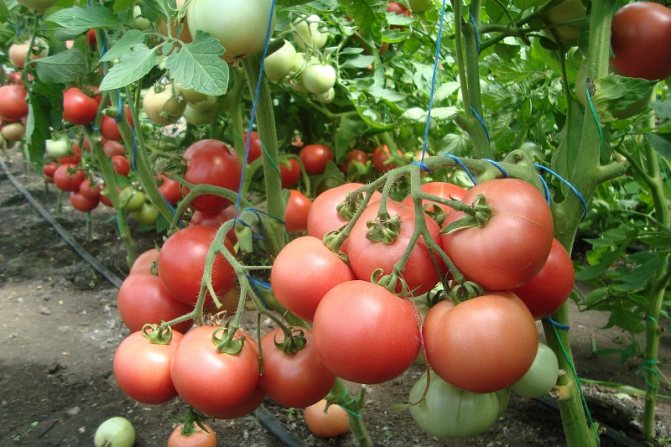

- fruiting is quite long;
- large-fruited;
- high commercial qualities;
- great taste;
- universality of use;
- good keeping quality;
- resistance to various tomato diseases;
- the yield is rich;
- the possibility of growing in any regions of the Russian Federation;
- perfectly ripened;
- do not crack;
- they are undemanding to care;
- does not need shaping;
- very few stepsons;
- resistant to temperature extremes.
All these positive qualities of tomatoes make the variety very popular among gardeners.
Disadvantages:
Some consider the disadvantage of the difficulty in preserving their favorite variety - large fruits are practically not pushed into the jar neck.
More: the need for tying, despite the low growth: large fruits incline the stem of the plant to the ground.
They are demanding on the soil: in order for large tomatoes to ripen quickly and become very sweet and tasty, so that they bear fruit for a long time and give a high-quality harvest, they need additional feeding.
These are all the disadvantages, which, however, many gardeners, gardeners consider advantages.
Recommendations for tomato agrotechnology
When buying seeds, you need to carefully study the information, choose the Raspberry Giant variety, and not a hybrid.
Sowing seeds
The usual sowing time for seedlings of such tomato varieties is March, more precise dates are determined taking into account the climatic conditions of the region and the phases of the lunar calendar. Before sowing, prepare:
- soil for seedlings;
- pots, boxes, cups - containers where tomatoes will grow first, and then after diving.
Seed material is calibrated, then soaked in approximately pink potassium permanganate solution. Many people know about this simple example of seed disinfection, but they often violate the exposure time or the concentration of the composition. Tomato seeds are soaked for no more than 15-20 minutes, the concentration of the solution should be minimal.
After a "bath" in potassium permanganate, it is recommended to rinse the seeds with clean water. The next stage is soaking in a growth stimulator, for which they use EPIN, aloe juice diluted in water or a saturated ash infusion. Then the seeds are placed in wet gauze for germination (you can use cotton pads or napkins).
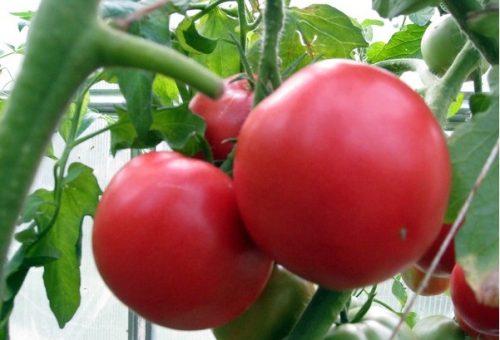

As soon as sprouts appear, the seeds are sown in boxes with soil, covered with foil and removed to a warm place. From the moment the first shoots appear, the shelter is removed, the tomatoes are exposed.
We take care of seedlings
When germinating seeds, the temperature should be between + 25 ° C ... + 27 ° C. As soon as shoots have appeared, the degrees are reduced to + 18 ° C and withstand this regime for about 4-5 days.
Subsequently, the temperature should be + 20 ° C ... + 23 ° C, tomatoes do not like extreme heat. With insufficient lighting, abundant watering and high temperatures, the plants will stretch, and this should not be allowed.
Therefore, they maintain optimal air temperature indicators, watered regularly, but in moderation. In March and April, lamps are used for supplementary lighting of plants.
As soon as 2-3 leaves are formed in the seedlings, the tomatoes are dived. The procedure allows you to slow down the pulling of seedlings, build up a strong root system for tomatoes, and reject the weakest seedlings.
Water the tomatoes with warm, settled water, trying to prevent water drops from falling on the plants. The soil should be slightly moist, but without excess moisture. Tomatoes in hot rooms with abundant watering are prone to black leg disease, and this phenomenon must be prevented. As a preventive measure, you can use water with potassium permanganate for irrigation (slightly pink solution), carefully ventilate the premises, and avoid temperature changes.
After diving, the seedlings are fed twice (with an interval of 10-12 days), for which complex fertilizers are used. Also, such compositions as Kemira, Ideal, Agricola are suitable for tomatoes.
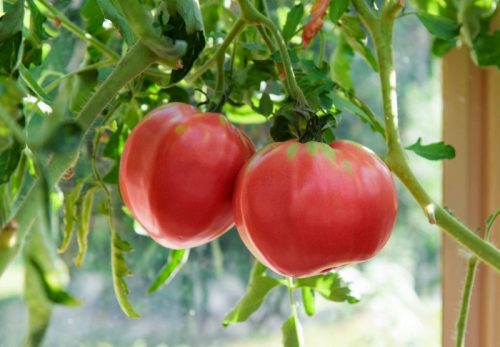

It is very important that the seedlings are strong and hardened when planting them in a permanent place. In about 10-14 days, tomatoes begin to gradually accustom themselves to new conditions, for which they are taken out to balconies, loggias, to a greenhouse. You can open windows, vents, but only if weather conditions permit.
Plants withstand first about 15-30 minutes, and then they increase the time to several hours.
Planting plants
The timing of tomato transplantation is determined depending on the region, taking into account the air temperature, the conditions for growing plants (in the beds, in the shelter).
In unprotected soil, the Raspberry Giant is grown even in regions such as the Urals, Siberia, and provided a good summer, the yields will be excellent. But it is still advisable to think over options with a greenhouse in such areas, then the result will be guaranteed.
Plants can be planted in shelters from the end of April (middle lane), in mid-May (more northern regions). Outdoors - late May or early June. The soil should warm up to + 14 ° C ... + 16 ° C, for which you can cover the ground with a black film about 7-10 days before planting.
This variety is planted with three bushes per square meter, in pre-prepared holes. Small plants of this tomato do not need powerful supports, but stakes can be placed in the open field.
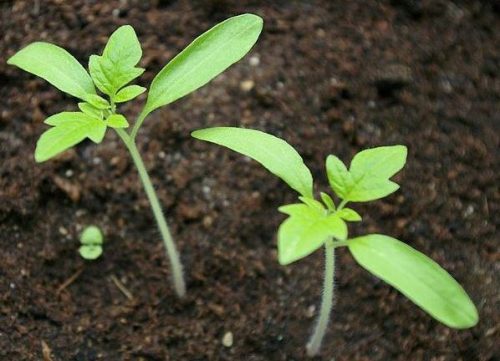

Features of growing varieties
Since the Raspberry fleshy variety is early maturing, its cultivation differs from the cultivation of other varieties in its characteristics.
Recommended growing regions
The variety is relatively young, there is not a lot of information about it yet. However, it is known that it was bred by Russian breeders, presumably it belongs to the Siberian-Altai series of tomatoes. The originator is.
Raspberry fleshy can be grown both outdoors and indoors.
Therefore, it is quite possible to grow it successfully in any region of the Russian Federation: in the south and in the middle lane - in an open garden (if you want to get earlier products, you can plant it in greenhouses), in more northern and colder regions with good results, this variety is confidently grown in closed ground, in areas of risky farming.
Since the Raspberry Fleshy Tomato variety is early ripe, it “goes away” from many tomato diseases, even from phytophthora. Subject to the prescribed rules of agricultural technology and the preventive measures taken, these tomatoes can calmly grow healthy and bear fruit successfully.
Diseases
More often, this tomato gets sick with the wrong planting scheme in the garden and with non-observance of the rules for growing tomatoes in greenhouses.
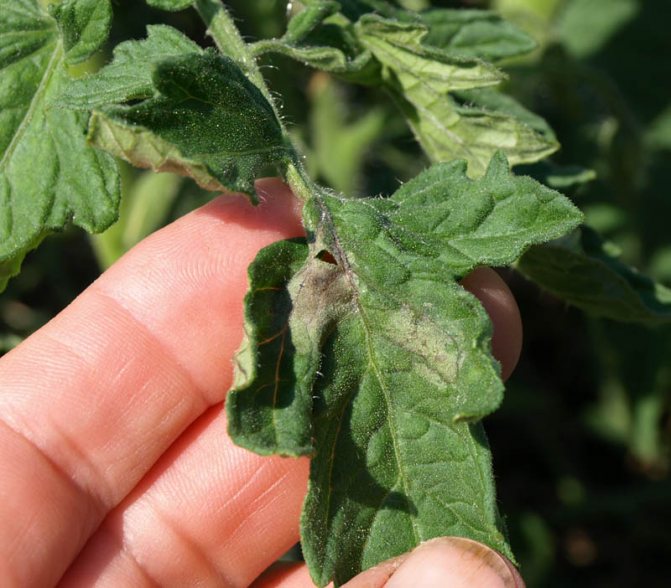

- The premises should be kept clean, disinfected after harvesting and before planting seedlings (the use of a sulfur checker is effective).
- All plant residues should be removed from the greenhouse, weeded regularly, avoiding the growth of weeds, which are carriers of viruses and bacteria, fungal spores and rot.
- The temperature regime and the level of humidity and illumination should be monitored regularly; ventilate the room.
Advice! In order for the plants in the greenhouse to be better and longer illuminated by the sun, it should be located from north to south (end face).
Preventive measures common to any soil:
- Observe the row and row spacing required for the grade.
- Avoid waterlogging of the soil, excessive moisture in the greenhouse.
- Regularly inspect the plantings: at the first signs of infection, carry out the fungicide treatment, strictly observing the dosage, the frequency of treatments prescribed in the instructions that are attached to them.
- Do not plant other plants from the nightshade family (peppers, eggplants, physalis, potatoes) next to tomatoes.
- It is useful to carry out preventive treatments with solutions or infusions.
- It is best to remove diseased bushes from the site immediately, then burn them to prevent the spread of the infection.
- Weed the beds in a timely manner, remove weeds.
For the prevention of fungal diseases, it is useful to periodically treat tomato bushes with Phytosporin or copper-containing preparations (copper sulfate, Bordeaux liquid).
If you do not want to use chemicals, you can process tomato bushes with infusions or solutions according to folk recipes, using, for example, products such as:
- milk serum;
- saline solution;
- potassium permanganate + garlic;
- rotten hay or straw;
- trichopolum;
- iodine + milk;
- ash;
Infusions from tomato or potato tops, and also with calendula flowers, also work effectively.
Growing seedlings
To successfully grow seedlings, you need to properly prepare the seeds and soil. First of all, it is important to prepare the planting material so as not to experience problems when growing. Use only healthy seeds. Before planting, they must be disinfected by dipping them in a weak solution of potassium permanganate for 2 hours. After that, remove them from the container, wash with running water.
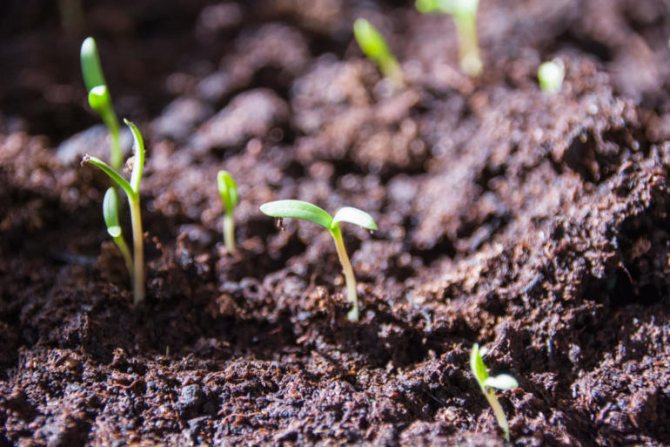

The seeds must be planted in March. Prepare plastic containers in advance, fill them with substrate.To do this, take soil and humus in a 1: 1 ratio. It is advisable to use crumbly humus so that in the future the soil can be easily loosened. Use organic fertilizers. Enough 30 g of superphosphate, as well as a small glass of ash. After placing the seeds in the box, cover them with a layer of earth a little less than 1 cm.
Water the plantings with a solution of a small amount of manganese. Place the seed box either outdoors or on a windowsill. It is advisable to ensure daily exposure of the seedlings to sunlight. Monitor soil moisture levels daily. Once it's dry, water your plantings. The first shoots can be expected to appear in a week.
Impeccable tomatoes with excellent taste - Raspberry fleshy tomato: description and characteristics of the variety
To grow especially tasty tomatoes - fleshy, sugary, tender, gardeners choose convenient varieties. Raspberry fleshy will be a great help. The variety is valued not only for its delicious pulp, it is easy to cultivate in different regions. Yields are consistently high in different years.
| Height | Pick-up location | Ripening terms | Fruit color | Fruit size | Origin | Fruit shape |
| Undersized | Greenhouse, Open ground | Early ripe | Pink | Large | Variety | Flat-round |
Pests and diseases
Among the varieties of tomatoes, the Raspberry Giant variety is highly resistant to many diseases and pests. Since the fruits begin to ripen early, the plant does not have time to catch the period when the infection is actively spreading.
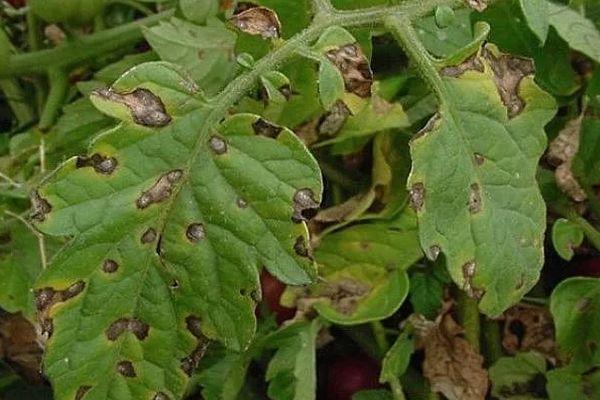

Despite the good immunity, vegetable growers recommend preventive treatment of the beds. For this purpose, boric acid, infusion of garlic, onion husks, and wood ash are used. Among biological products, Epin, Zircon, Oxygumate are considered safe and effective.
Description and characteristics of the variety
Tomato Raspberry fleshy - determinant standard undersized variety. Features of the bushes:
- the height varies in the range of 30-50 cm;
- stepchildren are a little late, so pinching is not required;
- leafiness and branching are moderately expressed;
- the stems are powerful and sturdy;
- fruits 3-5 per bunch;
- number of brushes 7-8.
Raspberry fleshy tomato from "Sedek" ripens in the early stages - 90-112 days from germination. Fruiting lasts from summer to autumn, with the arrival of frost, the last harvests are harvested for storage.
Characteristics of tomatoes:
- average weight 350-450 g;
- pulp is fleshy, moderately juicy;
- dry matter level 5-6%;
- rounded, flattened shape;
- seed chambers 4-6;
- dry matter level 6%.
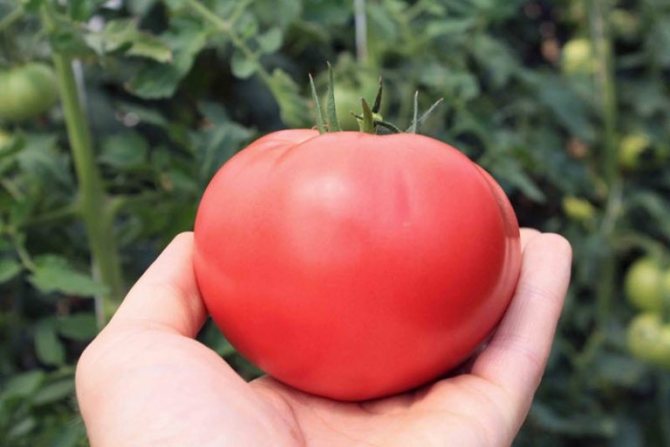

> Advantages and Disadvantages
10-12 kg are collected from 1 m2. The yield from 1 bush is 4.5-5 kg.
Care
Proper care of Raspberry Giant tomatoes includes a set of measures:
- watering;
- weeding;
- fertilization;
- garter;
- pinching.
Watering and feeding


Pieces should be watered as needed.
Plants should be watered as needed. Water must be poured at the root. The first time fertilization should be applied one week after transplanting.
Last year's foliage can be used as fertilizer. It is poured around the bushes. After some time, they will rot and nutrients will begin to flow into the ground. A manure solution is also used, which is periodically watered over the plants. Top dressing is stopped 3-4 weeks before the fruits ripen.
Loosening the soil
To increase yields, you need to regularly cultivate the soil between the rows. This helps to provide the root system with the required amount of oxygen. Weeding is carried out after precipitation and watering.
The heavier the soil, the deeper you need to loosen it. Along the way, weeds should be removed. The procedure must be carried out very carefully so as not to damage the root system.
Garter and pinning
For the garter, you need to prepare a dressing material that contacts directly with the stem. It is forbidden to use thread or wire. As it grows, tough materials will damage the stem and it may die. A cotton fabric cut into strips 10-15 cm wide is best. Before use, the fabric should be treated with a manganese solution.
There are a variety of accessories in stores today for tying and holding individual brushes. They are reusable. The garter helps the bushes to cope with the heavy weight of the fruit. It is also recommended to tie up individual bunches so that they do not break off the stem.
Raspberry Giant tomatoes require partial pinching. The ideal option is to form a crown in 2 stems. The leaves of the lower tier are to be removed before the first ovary. Grassing extra leaves allows you to speed up the ripening process of fruits and improve their quality indicators. To get a good harvest, you need to leave up to 6 fruits in bunches.
Features of growing and storage
4-5 bushes are planted per 1 m2. The distance between the holes is 40-50 cm. Transplant terms - the age of the seedlings is 50-55 days.
How are they looked after:
- moderately watered, the water rate is 6-7 liters per 1 bush;
- fed 2 times a month, a mullein solution, phosphorus-potassium mixtures are used from fertilizers;
- when ripe, boric acid is used.
To avoid excessive moisture evaporation and protect the bushes from pathogenic fungi, mulching is carried out with a layer of 8 cm.
Tomato care
After planting, the plants are left alone for a while for full adaptation. Watering during this period is not needed, and the first time tomatoes are watered no earlier than a week later.
They loosen the soil, remove the weeds, which at this very time begin to grow violently. After about 18-20 days, the first feeding is carried out using a diluted mullein (1:10) or complex fertilizers (nitrophosphate).
In the agricultural technology of tomatoes, an important place is given to irrigation. They should be moderate, regular, and abundant. It is optimal to equip the shelter with a drip irrigation system, but this is not always possible. Most often, summer residents usually watered - from a watering can, a hose, while it is recommended to use holes or grooves. Flowing water can erode the soil at the roots of plants, and if grooves are made, the soil will be moistened evenly, the water will reach the roots.
ON A NOTE! Tomatoes are watered with warm and settled water.
The norm for each plant is about 3-4 liters, during the period of flowering and fruit setting, the volumes increase. For tomatoes in open ground, rains are a good help; in a greenhouse, all watering is assigned to a person. It is important not to allow high humidity in the shelter, otherwise the tomatoes will hurt.


Abrupt breaks in the watering schedule lead to cracking of the tomatoes. Although the Raspberry Giant variety is not prone to cracking the fruit, with long pauses in irrigation, cracks and splits may appear on these tomatoes.
The feeding schedule should also be adjusted to ensure that the plants receive all the nutrients they need. After the first feeding, take a break of about 10-14 days and spend the second, using mineral phosphorus and potash fertilizers instead of organic matter.
They love watering tomatoes with ash infusion, as well as "green tea" - herbs infused with water. It is impossible to violate the dose of fertilizers, to introduce a lot of nitrogen, from which the plants "fatten", and the number of ovaries is reduced.
Tomatoes need nitrogen in the first half of the growing season, while later plants need potassium and phosphorus. Good results are obtained by watering tomatoes with banana peel infusion, baker's yeast. In stores, you can buy ready-made compositions for watering tomatoes, which contain all the nutrients necessary for the culture.
Do not forget about foliar feeding, which is very effective in cloudy weather.The assimilation of nutrition in this form is much faster, tomatoes bloom profusely, form fruits faster.
This variety is most often formed into one stem, less often into two. The raspberry giant needs partial pinching, for which the lateral shoots are removed in the axils below the flower brushes.
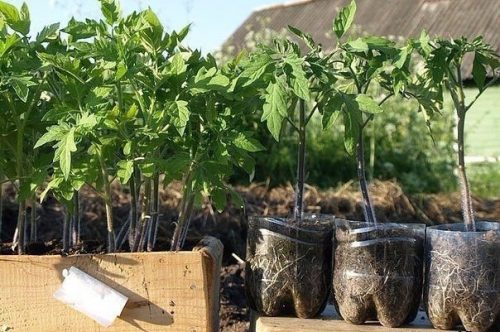

The variety is quite resistant to diseases and pests, it manages to "go away" from phytophthora due to the early ripening of the fruits. But prevention is needed in any case, therefore, from the end of June, plants are sprayed with special formulations:
- boric acid (one teaspoon is taken for 10 liters);
- Epin, Oxygumat (diluted according to the instructions for the drug);
- infusions of garlic, wood ash.
It is recommended to dust tomatoes in open ground with dry ash, as well as a mixture of ash and tobacco dust. This treatment helps protect plants from insect pests.
The fruits are harvested in a state of technical maturity, although in a greenhouse you can let the tomatoes fully ripen on the bush. Harvesting green fruit allows the plant to channel its forces into the formation of tomatoes in other clusters, which helps to increase the overall yield from the bushes.
An incredibly tasty variety from Bulgaria - Big Raspberry tomato: description of the variety and characteristics
Tomato Big raspberry is a popular variety native to Bulgaria. Breeders have successfully combined a beautiful heart shape, amazing taste, meatiness and ease of growing.
| Height | Pick-up location | Ripening terms | Fruit color | Fruit size | Origin | Fruit shape |
| Tall | Greenhouse, Open ground | Mid-season | Pink | Large | Variety | Heart-shaped |
Seedling transplant and follow-up care
After 45-50 days (approximately mid-May), when the main stem is 15-18 cm in height, the seedlings can be transplanted into the greenhouse.
They are planted in open ground at an average outdoor temperature of 18-20 °:
- the soil is selected sandy loam and not acidified;
- cucumbers, zucchini or potatoes should not be grown in front of the tomatoes in the garden;
- the transplant is carried out not in hot weather (in the morning or in the evening);
- the distance between bushes and rows is approximately 50 cm;
- the holes should be of a convenient size for the root system;
- water every 4-6 days with water at room temperature, periodically remove the weed and loosen the ground.
():
Cucumber and zucchini are some of the best precursors for tomato, because a lot of organic fertilizer is applied under them and they leave behind a more fertile land.
During the season, it is necessary to apply fertilizers 3 times:
- 10-15 days after disembarkation of seedlings;
- when the vegetable begins to bloom;
- before the beginning of fruiting.
To do this, use a special complex water-soluble mineral dressing Aelita-Vegetable (there is an NPK complex in the composition), which provides the necessary nutrition. Mineral solutions Agricols, Good Strength, Kid are suitable.
From organic matter - infusion of mullein (1 liter of mullein per 20 liters of water) or droppings (1:10). For one bush, 300-400 ml is enough.

